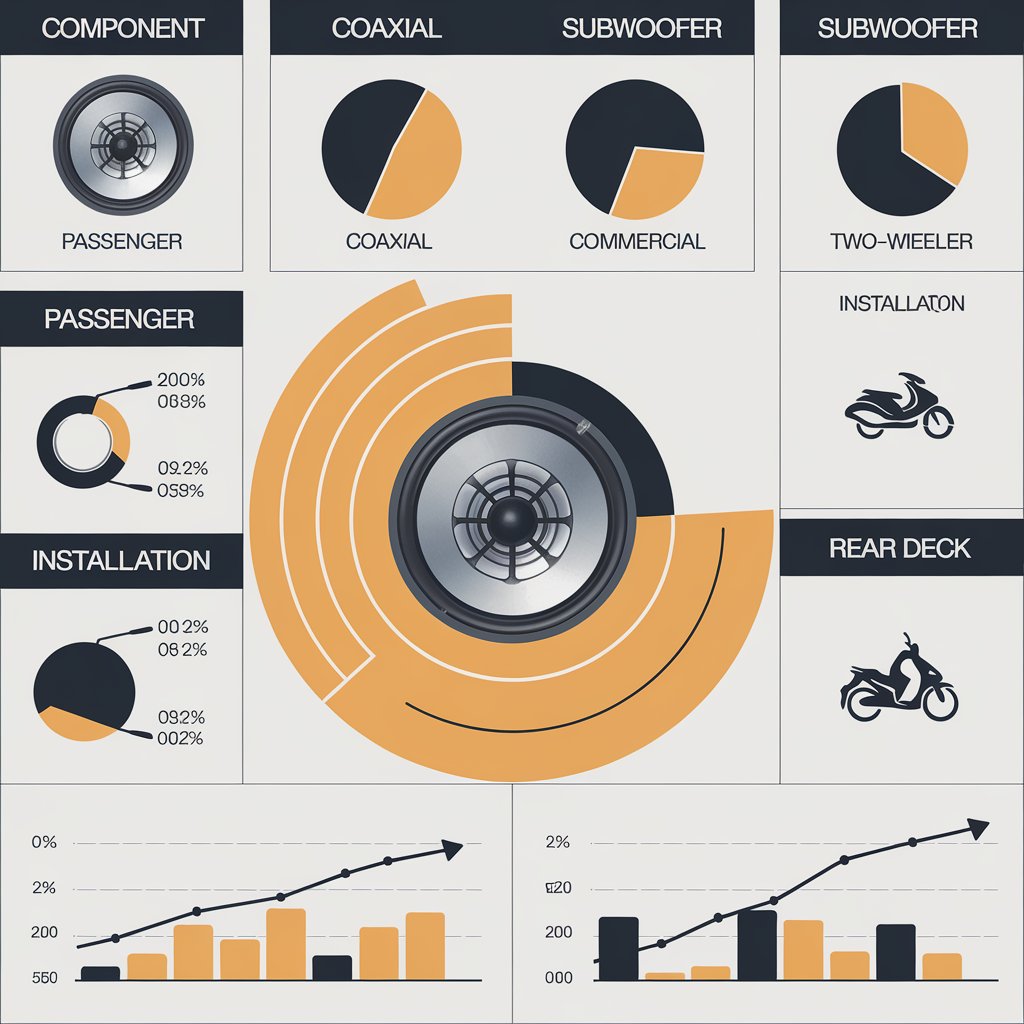The Shift from Basic Audio to Immersive Soundscapes
Traditionally, car audio systems were designed primarily to provide functional sound output—simply amplifying music or voice commands. However, consumer expectations have evolved dramatically, influenced by advances in home audio, personal electronics, and streaming services. Today’s drivers expect the in-car audio experience to rival, or even surpass, what they enjoy at home. This shift has driven manufacturers to develop more sophisticated speaker technologies that deliver rich, balanced, and immersive soundscapes.
Advanced in-vehicle speakers employ cutting-edge materials and designs to improve sound clarity, bass response, and spatial accuracy. For example, the use of lightweight composite cones, neodymium magnets, and specially engineered tweeters allow for greater frequency range and reduced distortion. The result is audio that feels fuller, more natural, and emotionally engaging, whether the listener is enjoying music, podcasts, or navigation prompts.
Integration of 3D and Spatial Audio Technologies
One of the most exciting developments in automotive audio is the integration of 3D and spatial sound technologies. Unlike traditional stereo systems that distribute audio primarily from two channels, spatial audio systems create a three-dimensional sound environment inside the vehicle cabin. This is achieved by positioning multiple speakers strategically throughout the car and employing sophisticated digital signal processing (DSP) algorithms.
The effect is an immersive listening experience where sound appears to come from specific directions and distances, much like a live concert or cinema. This enhances music enjoyment by reproducing instrument separation and vocal clarity with unprecedented realism. It also improves safety by providing clearer audio cues from navigation and driver assistance systems, helping drivers respond faster to critical alerts.
Download PDF Brochure @ https://www.marketsandmarkets.com/pdfdownloadNew.asp?id=192832677

Personalization and Adaptive Sound Profiles
Advanced in-vehicle speakers are also transforming the audio experience through personalization. Leveraging sensor data and AI-powered software, modern audio systems can automatically adjust sound profiles based on factors such as cabin occupancy, ambient noise levels, driving speed, and even individual listener preferences.
For instance, some systems detect how many passengers are in the car and optimize speaker output to ensure everyone receives balanced audio. Others reduce background noise by dynamically enhancing specific frequencies or activating active noise cancellation technologies. Additionally, mobile apps and touchscreens allow users to customize equalizer settings, select predefined sound modes, or create their own audio environments. This level of personalization ensures the sound experience is tailored, enjoyable, and comfortable for every journey.
Enhancing Electric Vehicle Experiences
Electric vehicles (EVs) have catalyzed innovation in automotive audio, particularly in speaker technology. Because EV cabins are much quieter without the roar of an internal combustion engine, subtle audio details become more noticeable, making high-quality sound systems essential. Manufacturers are investing in advanced speaker arrays that deliver clarity and richness to meet these new acoustic challenges.
Moreover, some EV brands incorporate engineered sounds through the speaker system—not just for entertainment but also for safety. Artificial engine noises, pedestrian alerts, and spatial sound cues are generated to compensate for the near-silent nature of EVs, blending functionality with an enhanced sensory experience.
Collaborative Innovation: OEMs and Audio Brands
The rapid advancement of in-vehicle speaker technology is largely driven by collaborations between automotive manufacturers and premium audio companies. Brands such as Bose, Harman Kardon, Bang & Olufsen, Meridian, and Bowers & Wilkins work closely with automakers to design speaker systems specifically tailored to each vehicle’s acoustic environment.
These partnerships enable the integration of proprietary technologies and bespoke tuning that optimize sound quality. They also leverage research in psychoacoustics—the science of how humans perceive sound—to create emotionally engaging audio experiences. For consumers, co-branded audio systems have become symbols of luxury and quality, influencing buying decisions and brand loyalty.
Challenges and Future Prospects
While advanced in-vehicle speakers offer remarkable benefits, there are challenges to widespread adoption. Cost remains a major factor, especially in mid-tier and entry-level vehicle segments where manufacturers must balance audio quality with affordability. Technical complexities such as integrating multiple speaker types and maintaining compatibility with various infotainment platforms also require ongoing innovation.
Looking forward, the continued development of AI-driven adaptive sound systems, integration with augmented reality (AR), and wireless speaker technologies promise to further transform the automotive audio landscape. As vehicles evolve into smart, connected environments, advanced in-vehicle speakers will play a crucial role in shaping how occupants interact with their cars and enjoy every journey.
Advanced in-vehicle speakers are redefining automotive audio by delivering immersive, personalized, and high-fidelity sound experiences. Through innovations in materials, spatial audio, and intelligent software, these systems are transforming the car cabin into a dynamic acoustic space. For OEMs and audio brands alike, investing in these technologies offers not only enhanced user satisfaction but also a powerful means of differentiation in an increasingly competitive automotive market. Ultimately, the future of driving will be heard as much as it is seen, making sound a vital part of the automotive experience.
FAQ: Advanced In-Vehicle Speakers and Automotive Audio Experience
Q1: What makes advanced in-vehicle speakers different from traditional car speakers?
Advanced in-vehicle speakers utilize superior materials, innovative designs, and digital sound processing to deliver clearer, richer, and more immersive audio. Unlike traditional speakers that focus on basic sound amplification, these systems create 3D spatial sound, adapt to cabin conditions, and offer personalized audio profiles for a premium listening experience.
Q2: How do 3D and spatial audio technologies work inside vehicles?
3D and spatial audio systems use multiple speakers placed strategically around the cabin combined with digital signal processing to simulate sound coming from various directions and distances. This creates an immersive, theater-like experience where listeners perceive audio as if it’s happening around them rather than just from the front or sides.
Q3: Why are electric vehicles (EVs) driving innovation in speaker technology?
EVs have much quieter cabins because they lack engine noise, making audio quality more noticeable. This has pushed automakers and audio companies to develop high-fidelity speaker systems that deliver exceptional clarity and immersive sound to fill the quiet space. Additionally, EVs use speaker systems to generate artificial sounds for safety and enhanced user experience.
